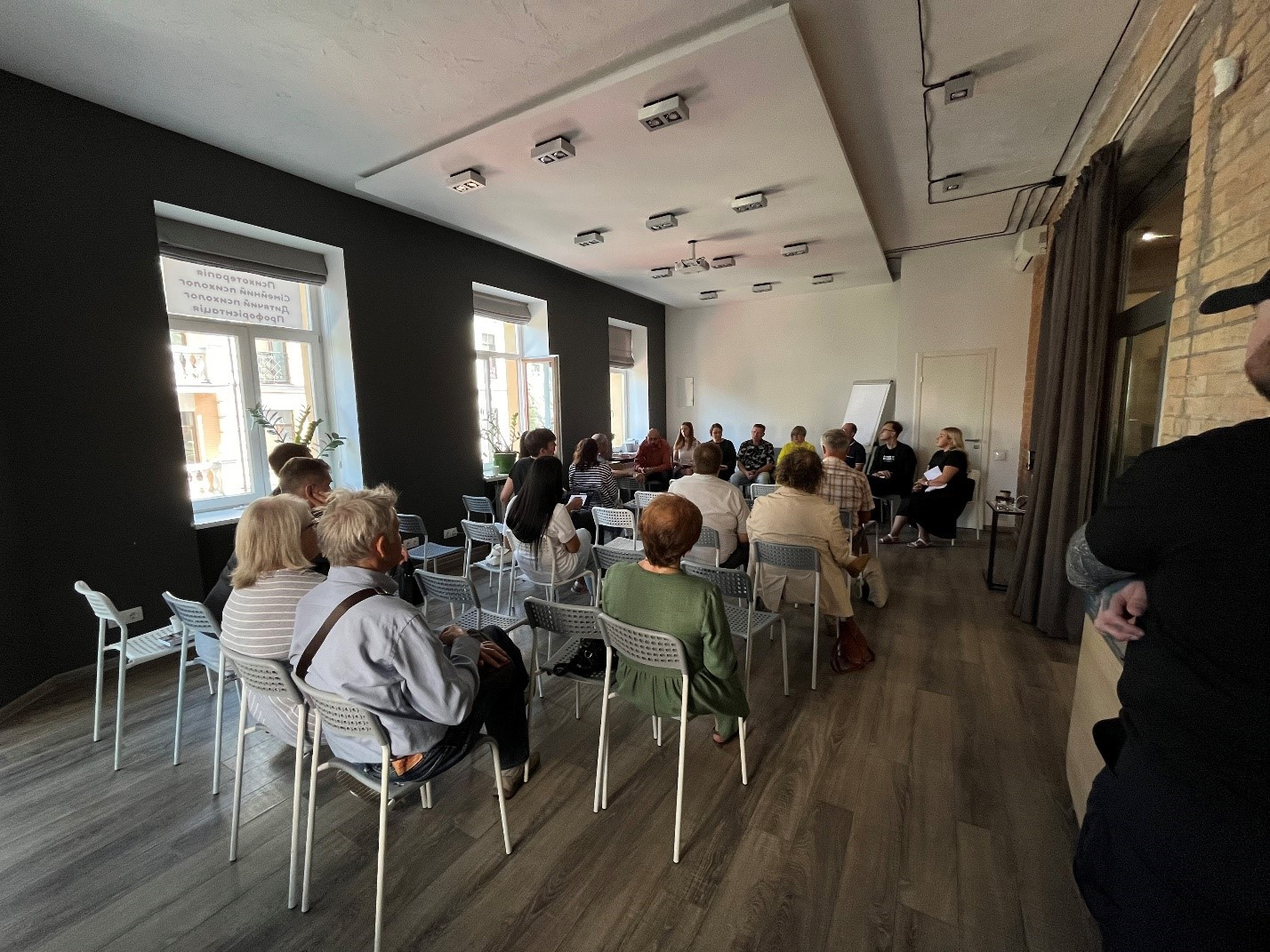
On 10 September, human rights activists from the “Eastern Ukrainian Center for Civic Initiative” and their partners presented a research book “Unclear Clarities: Myths and Stereotypes Around the War and Donbas” and discussed the recent past and future of the region.
The book is dedicated to breaking the war-related myths created by Russian propaganda with the aim to split Ukrainian society. The collection analyses and refutes misconceptions about Donbas residents and the outbreak of war in 2014, the reasons why people agree to obtain Russian passports, stay under the occupation and the realities there, as well as about captivity and the problems of civilian prisoners of war. The book also touches upon the issue of compensation for the victims by the Ukrainian state.
The authors talked about the mood in Donbas in 2014 and disclosed Russia’s role in covertly provoking armed aggression. The book describes how Russia worked to exaggerate the number of participants in pro-Russian rallies and present their mood as dominant in local communities. Russians specially brought into the country took part in the “protests”. This is evidenced by the memories of local residents from different cities of Donbas. The heads of the occupation institutions themselves mentioned at least 500 Russians who were brought in to participate in the “people’s” protests. Administrative resources were actively used. The same people toured rallies in different cities. At the same time, small towns did not gather rallies with many Russian Spring supporters, which suggests that they were left beside the organisational scenario. The book describes that the supporters of separation from Ukraine did not have their own ideological unity and common vision of the development of events, which was not broadcast by Russia, and often clashed with each other. The fact that the Ukrainian protests, which were no less large-scale ones, did not receive adequate media coverage, and that Ukrainian law enforcement agencies played the role of a backdrop and did not intervene in the events, also helped worked for Russia’s benefit.
The section on how people really voted at the so-called “referendum” describes how pro-Russian structures shaped a vision of its massive scale. The image of people in queues was created for the media due to few operating “polling stations” and multiple “votes” by the same people. The “ballots” themselves did not clearly indicate what people were voting for, and there were even cases when Donetsk was specified in the Luhansk oblast ballots. Most importantly, real statistics show that the idea of separation was not supported by the majority of people.
In addition to describing the events that took place in Donbas, the book provides an outline of how the low-down on the problems described is given in the context of a full-scale invasion.
Among other things, the book raises the question “Is obtaining an occupation passport a crime or a necessity?”. The chapter of the same name describes how the forced passportization has been carried out since 2014 and how it is developing after 2022. It voices the reasons why Ukrainian citizens have to obtain passports and whether people under occupation have the opportunity to refuse to do so.
One of the issues that arose in 2014 and has gained new momentum since the full-scale Russian invasion is the payment of pensions to Ukrainians in the occupied territories. Before, Ukrainians were often negative towards the receipt of pensions by residents of the occupied territories of eastern Ukraine. The presentation participants also mentioned that the issue of receiving Ukrainian pensions has now become critical in the newly occupied territories. Some families are surviving solely because they have these payments, since they have no other sources of income due to the refusal to get Russian passports.
An important part of the discussion was the question whether and how many people who support Ukraine stay in the occupied territories. Participants said that people are afraid to express their pro-Ukrainian sentiments, both in the territories that have been occupied for 10 years and in the newly occupied ones. They talk about them very cautiously and in a veiled manner, and try to group with those who support Ukraine. The book has a separate chapter on this issue. The authors also tell the stories of Ukrainians who do not just stay in the occupation, but help the Ukrainian special services and the Armed Forces.
“The issues raised in the book are complex. Our society has radically different views of many of them. Russian propaganda is actively working to foment these contradictions: trifles are hyperbolised and exaggerated, and lies are generously mixed with the truth. “The book offers a view of the problems without the impurities of Russian propaganda. We urge Ukrainians to speak frankly about the problems and look for a common position,” commented Volodymyr Shcherbachenko, head of the NGO “Eastern Ukrainian Center for Public Initiatives”.
The collection is based on interviews, focus groups, and open source data.
The book is available for free download here.
This book was prepared as part of the project “Strengthening Civil Society to Transform the Culture of Remembrance: Nonviolent Efforts to Counter Russia’s War Against Ukraine” by the “Eastern Ukrainian Center for Public Initiatives”, the NGO “Public Committee for Protection of Citizen’s Constitutional Rights and Freedoms”, the “Moloda Prosvita Prykarpattia” NGO, and the Crisis Media Center “Seversky Donets”, with the support of Kurve Wustrow — Centre for Training and Networking in Nonviolent Action as part of the Civil Peace Service (CPS) programme.
